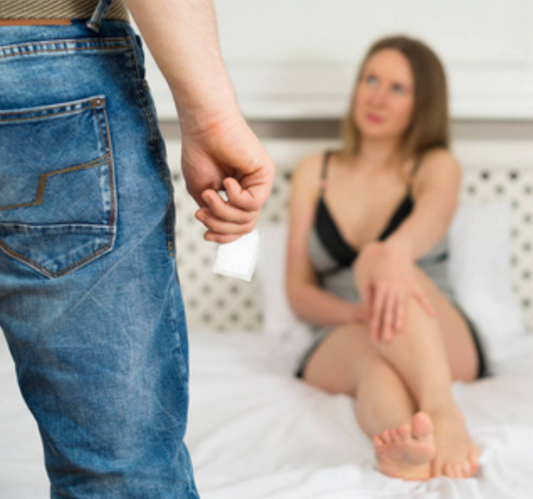
Vaginal Dryness: Unraveling the Causes and Science-Backed Solutions for Comfort
Share
Vaginal dryness is a common yet often misunderstood issue that affects women of all ages, from their 20s to post-menopause. Characterized by a lack of natural lubrication in the vaginal area, it can lead to discomfort, itching, burning, or pain during sexual activity—symptoms that may impact both physical comfort and emotional well-being. While it’s easy to dismiss as a minor inconvenience, understanding its root causes and exploring evidence-based solutions is key to reclaiming comfort. Let’s dive into the science behind vaginal dryness and practical ways to address it.
What Causes Vaginal Dryness?
The vagina’s natural lubrication is produced by glands in the cervix and vaginal walls, regulated primarily by hormones (especially estrogen), blood flow, and overall vaginal health. When this balance is disrupted, dryness can occur. Here are the most common triggers:
1. Hormonal Fluctuations
Estrogen is critical for maintaining the thickness and elasticity of vaginal tissues, as well as promoting lubrication. A drop in estrogen levels is the leading cause of dryness, often linked to:
- Menopause: During perimenopause and post-menopause, estrogen production plummets, thinning vaginal walls and reducing moisture. Up to 50% of postmenopausal women experience dryness.
- Pregnancy and breastfeeding: Hormonal shifts (notably a rise in progesterone) can temporarily reduce estrogen, leading to dryness.
- Hormonal contraceptives: Birth control pills, patches, or intrauterine devices (IUDs) with progestin may lower estrogen levels, causing dryness in some women.
2. Medical Conditions and Treatments
Certain health issues and therapies can disrupt vaginal health:
- Autoimmune disorders: Sjögren’s syndrome, which attacks moisture-producing glands, often causes vaginal dryness alongside dry eyes and mouth.
- Cancer treatments: Chemotherapy and radiation (especially to the pelvic area) can damage vaginal tissues and reduce estrogen.
- Diabetes: High blood sugar levels can impair blood flow to the vaginal area and increase the risk of infections, both of which contribute to dryness.
3. Lifestyle and Hygiene Habits
Everyday choices can also play a role:
- Harsh products: Soaps, douches, scented lotions, or laundry detergents with chemicals can strip the vagina’s natural protective barrier (the acid mantle), leading to dryness and irritation.
- Dehydration: Chronic dehydration reduces overall bodily fluids, including vaginal lubrication.
- Smoking: Nicotine restricts blood flow to the vaginal area, impairing tissue health and moisture production.
4. Emotional and Psychological Factors
Stress, anxiety, or relationship issues can trigger a “fight-or-flight” response, diverting blood flow from non-essential areas (like the vagina) and reducing arousal-related lubrication. Trauma, such as a history of sexual abuse, may also impact physical responses to intimacy.
Science-Backed Solutions for Relief
Addressing vaginal dryness often involves a combination of lifestyle adjustments, medical interventions, and targeted products. The right approach depends on the cause, but these strategies are widely recommended:
1. Hormonal Therapies (for Severe Cases)
For postmenopausal women with moderate to severe dryness, low-dose estrogen therapy (delivered via creams, rings, or tablets) can restore vaginal tissue health and lubrication. This is typically prescribed when other methods aren’t effective, as it carries minimal systemic risks compared to oral hormone replacement therapy (HRT).
2. Over-the-Counter Lubricants and Moisturizers
Lubricants and moisturizers are frontline solutions, but they serve different purposes:
- Lubricants: Designed for immediate relief during sexual activity, they reduce friction. Water-based lubricants (like Lustella’s Plant-Based Natural Lubricant for Women) are gentle, compatible with condoms, and ideal for sensitive skin. Unlike oil-based options (which can weaken latex), water-based formulas mimic the body’s natural moisture. Explore Lustella’s pH-balanced, plant-derived lubricant at https://lustela.com/products/lustella-women for a irritation-free experience.
- Moisturizers: Used regularly (2–3 times weekly), they hydrate vaginal tissues long-term, similar to how face moisturizers work. Look for fragrance-free, hypoallergenic options.
3. Lifestyle Adjustments
- Avoid irritants: Switch to mild, unscented soaps and laundry detergents, and skip douching (the vagina cleans itself naturally).
- Stay hydrated: Aim for 8–10 cups of water daily to support overall fluid production.
- Quit smoking: Improving blood flow can enhance vaginal tissue health over time.
- Manage stress: Practices like yoga, meditation, or deep breathing can boost blood flow and reduce anxiety-related dryness.
4. Sexual Wellness Practices
- Extended foreplay: Taking time for arousal (e.g., kissing, touching, or using erotic media) can stimulate natural lubrication.
- Communication: Discussing discomfort with a partner reduces pressure and fosters empathy, making intimacy more relaxed.
When to See a Doctor
While occasional dryness is normal, persistent symptoms (e.g., pain during sex, bleeding, or frequent infections) may signal an underlying condition. A gynecologist can rule out issues like vaginitis, thyroid disorders, or hormonal imbalances and recommend personalized treatments.
Vaginal dryness is not a sign of “abnormality”—it’s a common condition with clear, actionable solutions. By addressing the root cause and using gentle, effective tools like lubricants, women can restore comfort and confidence. Remember, prioritizing vaginal health is an essential part of overall well-being—and there’s no shame in seeking relief.
For a natural, plant-based lubricant designed to support comfort during intimacy, try Lustella’s formula, crafted to complement the body’s needs. Visit https://lustela.com/products/lustella-women to learn more.



